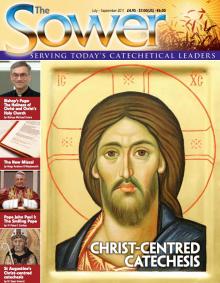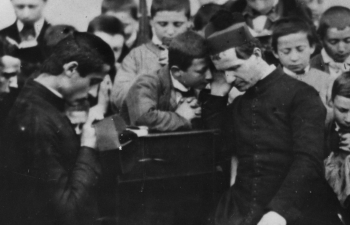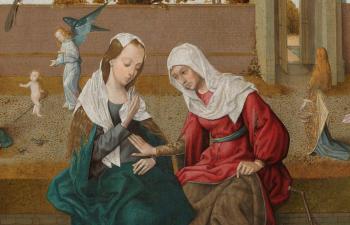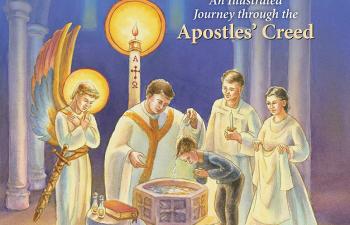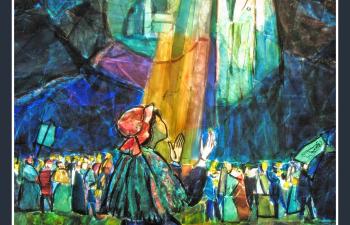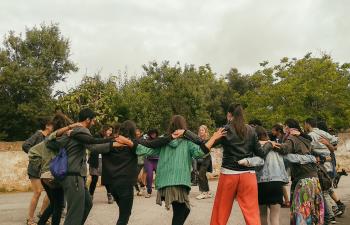It is deeply enriching to present the Church’s doctrine on Christ through Mary. The Second Vatican Council taught that ‘Mary unites and mirrors within herself the central truths of the faith’ (Lumen Gentium 65). Mary is described as a mirror. This is a very helpful image.
Mirror
When one holds up a mirror one can see, reflected in it, the items in a room. A mirror does not reveal itself, does not show itself. A mirror reflects, it shows realities other than itself that are present. A mirror is supremely self-effacing. We might want to say: a mirror is humble. It does not draw attention to itself, but to other things.
Mary is a mirror in this sense; therefore pointing people to Mary to look at her, and introducing the central dogmas and Feasts concerning her are wonderful means of ‘mirroring’ the central dogmas of the Catholic Faith as a whole. The mysteries of the Faith appear, are ‘made visible’ in teaching about Our Lady.
It is precisely because Mary so perfectly ‘mirrors’ the Faith in its central contents that Mary is called a ‘living catechism’ by Blessed John Paul II in Catechesi Tradendae (73). Her life is a catechesis for us in the Church’s teachings.
Defender against all heresy
Because she has this character, Mary is also known as the defender against all heresy. This is a phrase that was applied to her particularly in relation to the early Council of Ephesus (431 AD), the Council which also confirmed that she should be called Theotokos, ‘God-bearer’, because she carried in her womb the Person of the eternal Son of God.
The Council of Ephesus had as its focus the Person of Christ and the Council concluded by defending the unity of Christ as a single Person. Much of the battle, however, raged over the title to be given to Our Lady – could she truly be called ‘God-bearer’, or is this title heretical? Would be more strictly accurate to say, instead, that she was the bearer of the human person of Jesus, or the bearer of the Messiah? What human mother, after all, can bear God in her womb? Is this not nonsense?
What was at stake was the Church’s teaching on the Person of Christ and whether he was a single Person. St Cyril of Alexandria, who was leading the defence of the title Theotokos, appreciated that this title for Our Lady secured the truth about Christ, secured the Church’s understanding of Christ’s unity – there is only one Person in Christ, and this is the divine Son, the Second Person of the Blessed Trinity. It is not nonsense, but the glorious truth of the Gospel, to proclaim that Mary bore God in her womb. A denial of Mary’s title would mean a denial of this truth. The mirror would be darkened and we would have a distorted image of Christ.
Living Catechism
Mary is a mirror of the truths of the Faith. Or, we could say, her life is like an ‘open book’ in which one can read these truths. She is a living, walking, breathing catechism. Turn the pages of Mary’s life and you can find there the central realities of God’s revelation of himself and of his plan.
We can take the annunciation, for example. We have already noted the importance of securing the right understanding of Mary’s role in the Incarnation, as the Mother of God. St Luke’s passage on the angel’s annunciation to Mary reveals to us so many of the truths of the Faith. We see the Blessed Trinity at work – the Father sending his messenger; the Holy Spirit overshadowing Our Lady; and the divine Son being conceived in her womb. We see the work of redemption revealed in the name to be given to the Child, Jesus, ‘God saves’, and this redeeming work placed within the narratio of salvation history, as the fulfilment of God’s promises and his covenants with his people. We see the fruits of Christ’s redeeming work in the title given to Mary, ‘full of grace’, revealing Mary as the Immaculate, preserved from original sin and made fit for the Father’s kingdom. We see the character of our own dignity in Mary’s fiat, in her free and willing acceptance of the work of grace in her.
Coming to Christ through Mary: many take this as a spiritual principle, or even as a consecration. What we can see is that it is also a catechetical principle. ‘Take and read’, St Augustine heard the voice saying, at that crucial moment before his conversion. ‘Take and read’ we might say also, in relation to Mary: turn the pages of this living book, of this ‘masterwork’ of the Blessed Trinity, as the Catechism calls her (CCC 721), and we can read Christ there, for ‘she makes the Word visible in the humility of his flesh’ (CCC 724).
This article is originally on page 4 of the printed edition.
This article is from The Sower and may be copied for catechetical purposes only. It may not be reprinted in another published work without the permission of Maryvale Institute. Contact [email protected]


